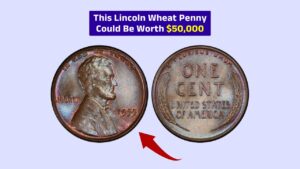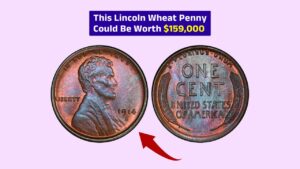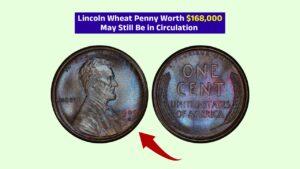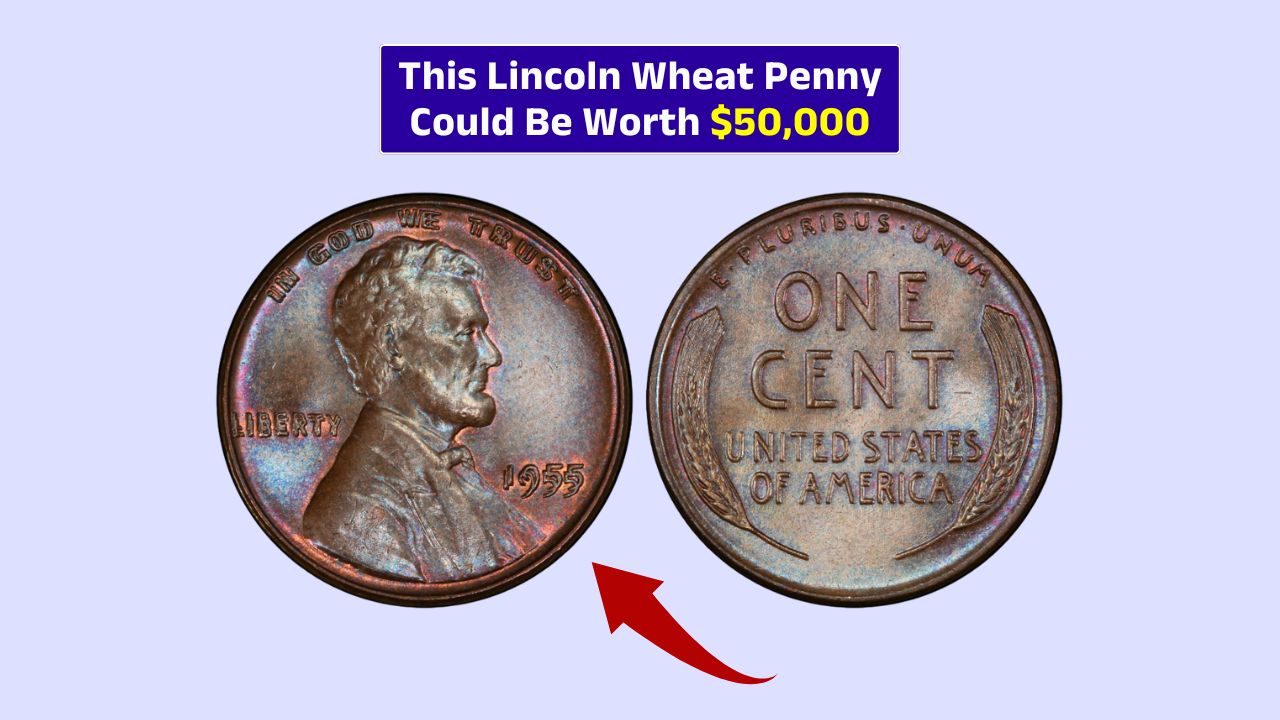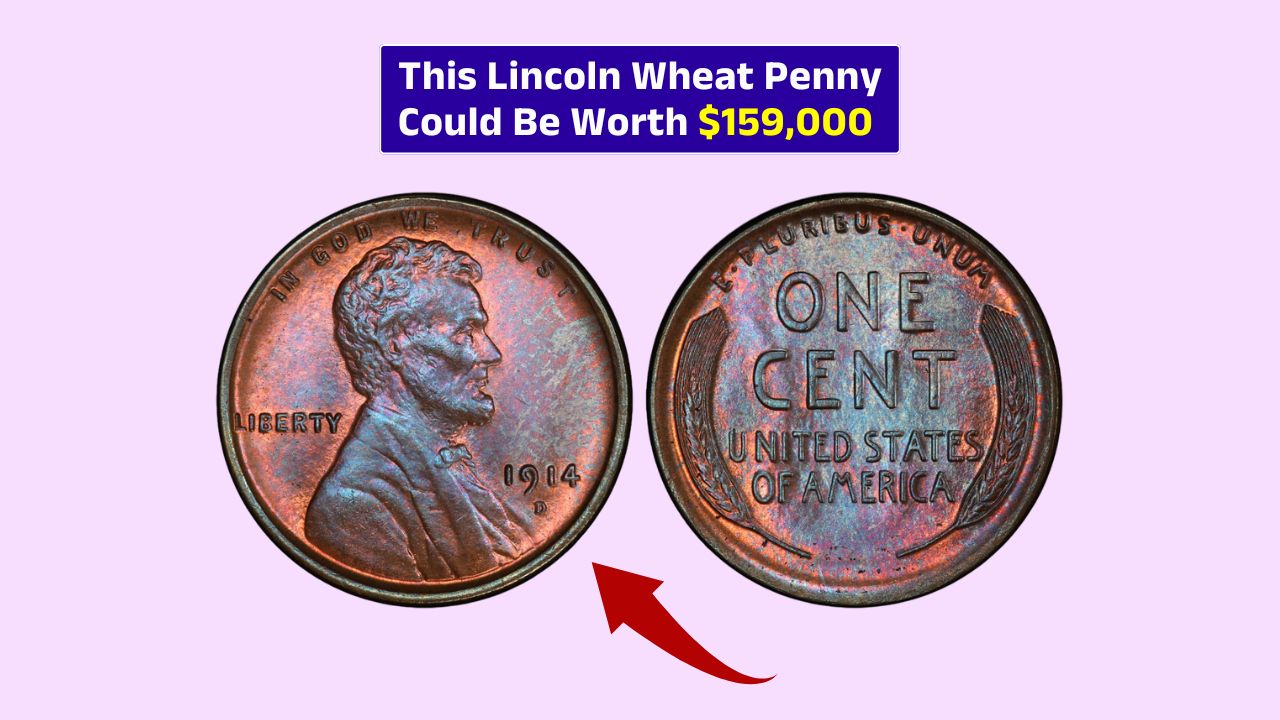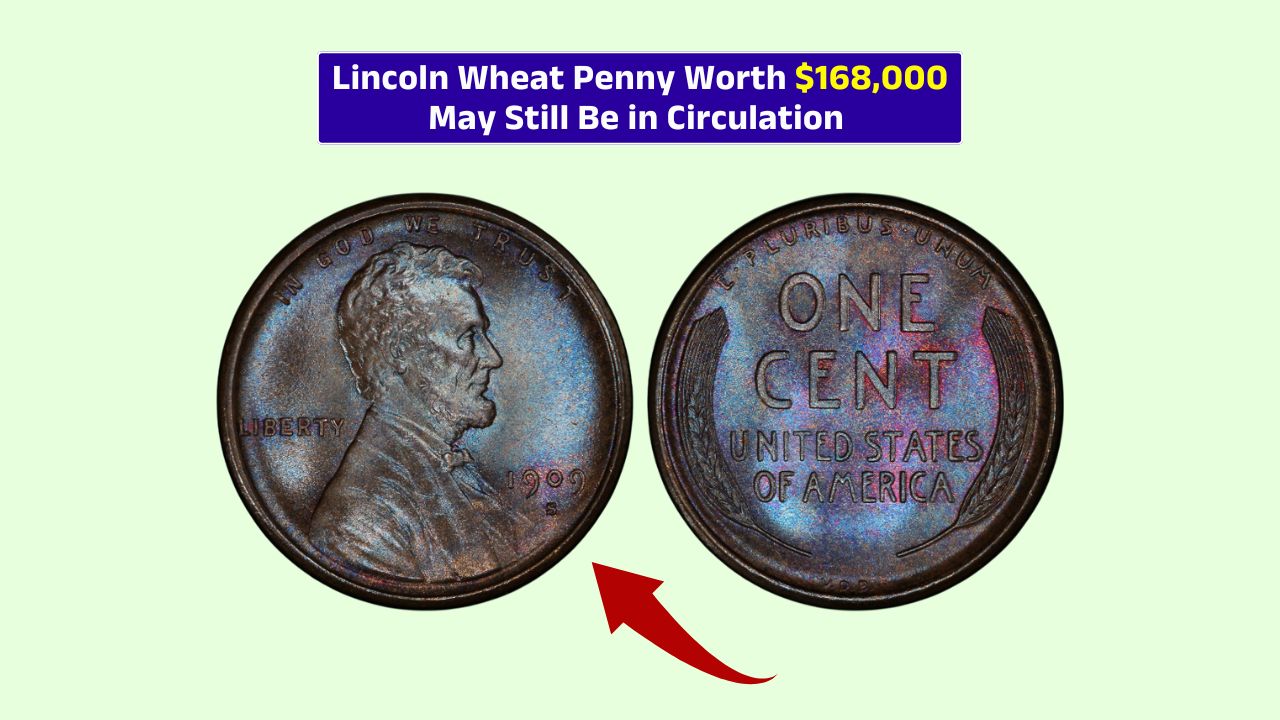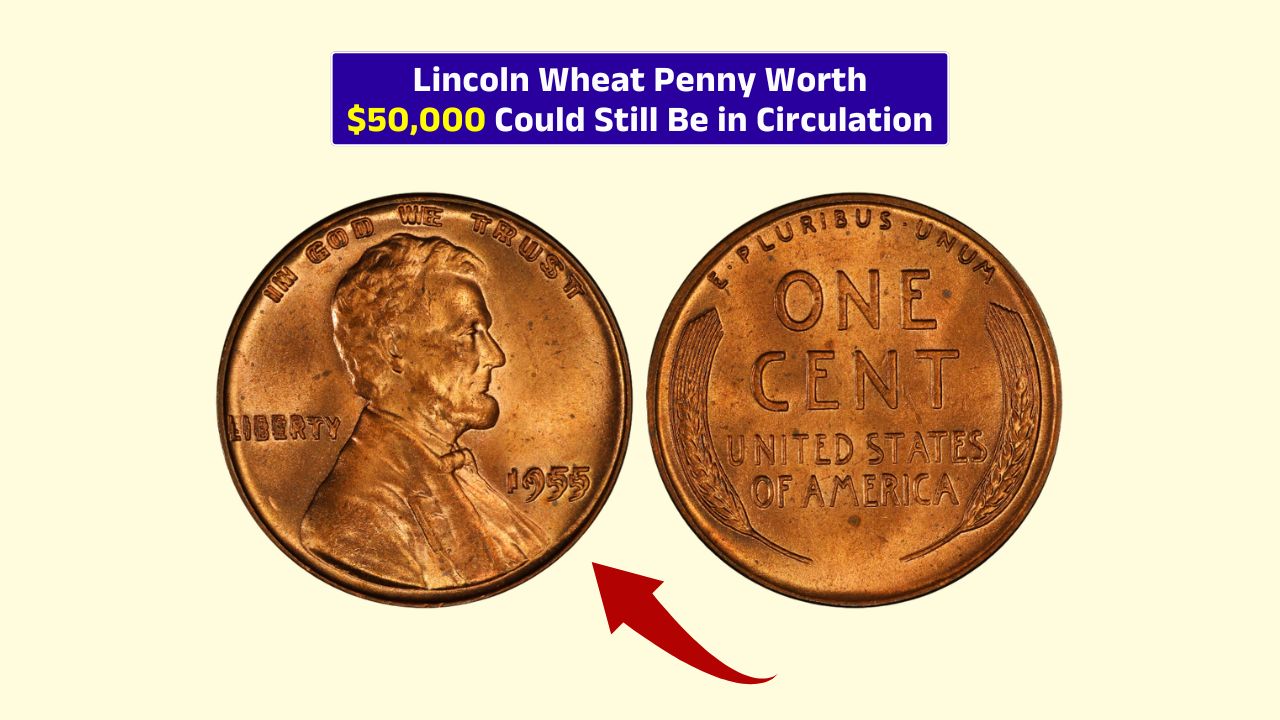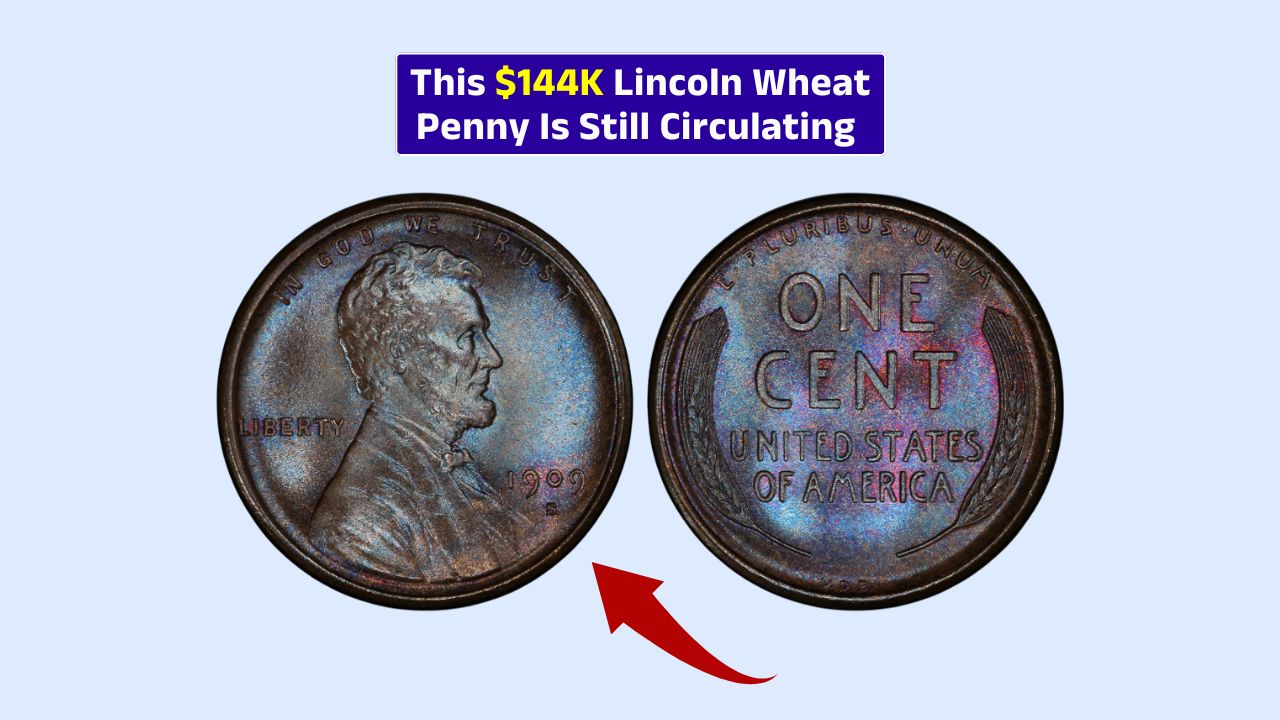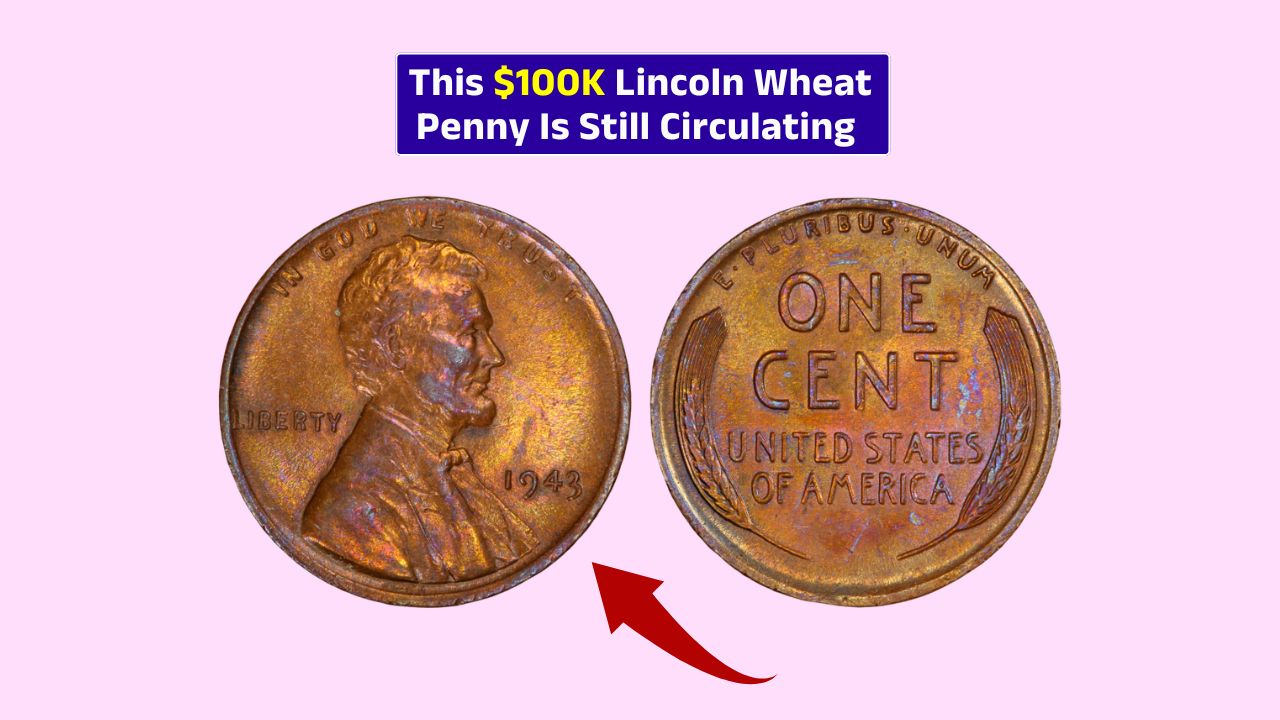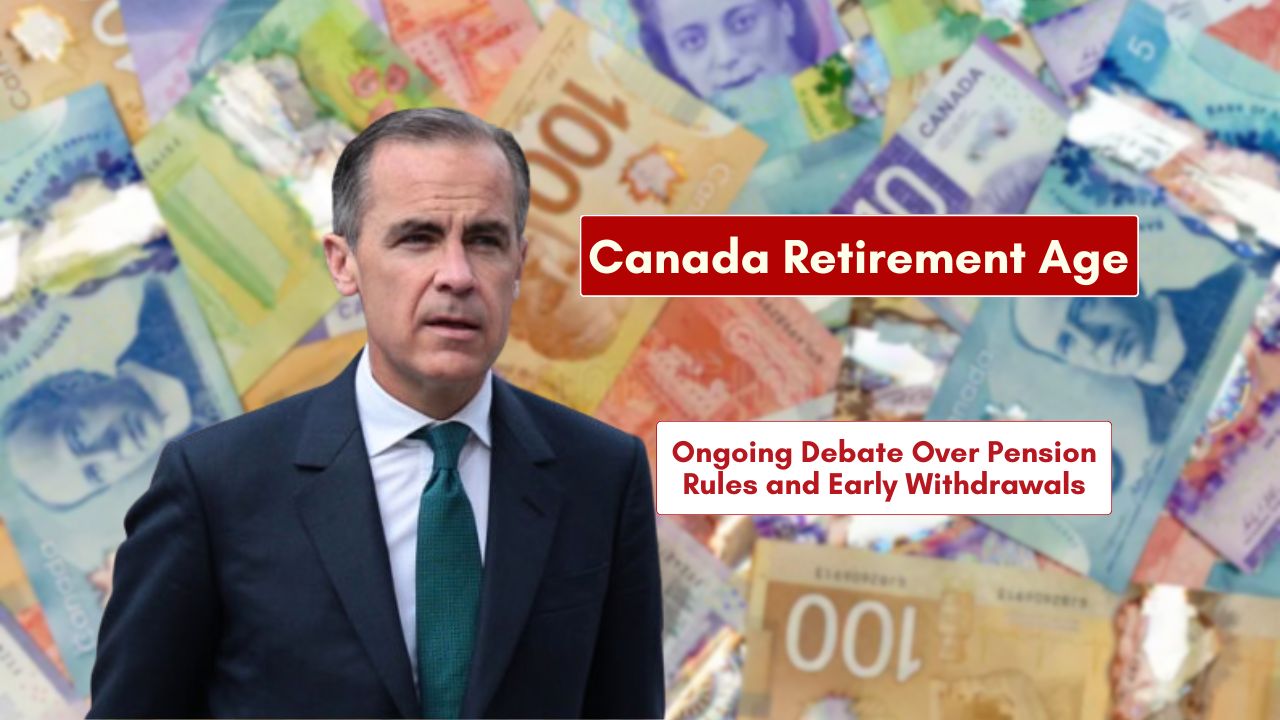The Lincoln Wheat penny, minted from 1909 to 1958, is a true American classic. While most of these copper coins still trade for face value, a few select issues have become legends—thanks to their rarity, historical context, and incredible collector demand.
Let’s look into five of the most valuable Lincoln Wheat cents ever produced and find out what makes them so special (and so expensive).
1909-S VDB
The 1909-S VDB is the ultimate key date in the Lincoln series. It was struck during the very first year the coin was introduced, featuring designer Victor David Brenner’s initials (VDB) boldly placed on the reverse.
That bold placement sparked public backlash, and the U.S. Mint quickly removed the initials. But before they did, only 484,000 coins were struck in San Francisco with the initials intact—making this one of the lowest-mintage, widely collected coins in U.S. history.
Collectors love it because it’s rare, historic, and instantly recognizable. Here’s what they’re worth now:
| Grade | Market Value |
|---|---|
| Good-4 | $700 – $800 |
| Fine-12 | $950 – $1,200 |
| Very Fine-20 | $1,300 – $1,600 |
| Extremely Fine-40 | $1,900 – $2,300 |
| About Uncirculated-50 | $2,500 – $3,000 |
| MS-63 RB | $3,500 – $4,500 |
| MS-63 Red | $5,000 – $6,500 |
| MS-65 Red | $9,500 – $12,000 |
| MS-66 Red | $18,000 – $25,000 |
Authentication is critical. Fakes and altered coins are common, especially with added “S” mint marks. That’s why professional grading from PCGS or NGC is a must for serious buyers.
1914-D
The 1914-D may not be as well-known as the 1909-S VDB, but it’s even tougher to find in mint state. With a mintage of 1,193,000, it seems more common—until you realize most were heavily circulated.
Few were saved in uncirculated condition, making it a true condition rarity. Prices reflect this growing demand:
| Grade | Market Value |
|---|---|
| Good-4 | $200 – $275 |
| Fine-12 | $350 – $500 |
| Very Fine-20 | $600 – $850 |
| Extremely Fine-40 | $1,200 – $1,800 |
| About Uncirculated-50 | $2,200 – $3,000 |
| MS-63 RB | $4,000 – $5,500 |
| MS-63 Red | $9,000 – $12,000 |
| MS-65 Red | $20,000 – $28,000 |
The coin usually shows weak detail in Lincoln’s beard and ear—helpful markers when authenticating. Like the 1909-S VDB, grading and certification are essential to avoid altered coins.
1922 Plain
One of the most famous error varieties in the Lincoln series, the 1922 Plain penny came from the Denver Mint in a year when no Philadelphia cents were made. Due to die wear and grease buildup, some coins came out missing the “D” mint mark entirely.
There are several varieties, but the most valuable shows no mint mark at all and a strong reverse design (Die Pair 2). These coins are serious money:
| Grade | Market Value |
|---|---|
| Good-4 | $500 – $750 |
| Fine-12 | $1,000 – $1,500 |
| Very Fine-20 | $2,000 – $3,000 |
| Extremely Fine-40 | $4,000 – $6,000 |
| About Uncirculated-50 | $7,500 – $10,000 |
| MS-63 Brown | $20,000 – $25,000 |
| MS-63 RB | $30,000 – $35,000 |
Collectors love this variety for its origin story and the challenge of proper attribution. Misidentified weak “D” examples don’t carry the same value—so again, certification is crucial.
1955 Doubled Die
The 1955 Doubled Die Obverse is arguably the most dramatic and famous Lincoln cent error. The doubling on the date and lettering is so bold that you don’t even need a magnifying glass to see it.
Roughly 20,000 to 24,000 made it into circulation before being observed. Many were found in cigarette packs sold from vending machines, which only adds to their mystique.
| Grade | Market Value |
|---|---|
| VG-8 | $950 – $1,200 |
| Fine-12 | $1,200 – $1,500 |
| VF-20 | $1,500 – $1,800 |
| EF-40 | $2,000 – $2,500 |
| AU-50 | $2,800 – $3,500 |
| MS-63 RB | $3,500 – $4,500 |
| MS-63 Red | $5,500 – $7,000 |
| MS-65 Red | $18,000 – $25,000 |
The doubling is clear and dramatic—true hub doubling, not mechanical. This coin remains one of the most exciting error discoveries in modern U.S. coinage.
1931-S
The 1931-S isn’t an error or a design change—it’s simply a low mintage issue. During the Great Depression, only 866,000 were struck in San Francisco.
Collectors already knew it was a key date by the time it came out, so many saved examples in mint state. That’s why prices for circulated grades are modest, but high-grade examples still bring strong money.
| Grade | Market Value |
|---|---|
| Good-4 | $100 – $125 |
| Fine-12 | $110 – $140 |
| VF-20 | $125 – $150 |
| EF-40 | $175 – $225 |
| AU-50 | $250 – $350 |
| MS-63 RB | $350 – $450 |
| MS-63 Red | $500 – $650 |
| MS-65 Red | $1,000 – $1,500 |
| MS-67 Red | $7,500 – $10,000 |
With nice strikes and a decent supply of mint-state coins, the 1931-S is accessible for many collectors—especially those looking for solid long-term growth.
Market
These five pennies prove that Lincoln Wheat cents are anything but ordinary. From first-year rarities to minting errors and economic oddities, they each tell a unique story.
Condition and authenticity drive the market. A jump from Fine to Extremely Fine can mean thousands of dollars, especially on the 1914-D or 1922 Plain. Certification from PCGS, NGC, or ANACS gives you peace of mind and market credibility when buying or selling.
While many coins in this list have reached five-figure prices, options exist for every budget. Circulated examples of the 1931-S or 1909-S VDB offer entry points for new collectors, while high-grade gems appeal to investors and serious hobbyists.
Whether you’re in it for the history, the hunt, or the value, these Lincoln Wheat cents show how a simple penny can be worth so much more than one cent.
FAQs
What’s the most valuable Lincoln Wheat penny?
The 1909-S VDB can reach $25,000+ in high grades.
How do I spot the 1955 Doubled Die?
Look for bold doubling on date and lettering.
Is the 1922 Plain a real error?
Yes, caused by a worn die at the Denver Mint.
Should I get my penny graded?
Yes, for authentication and accurate market value.
Are there affordable key date wheat pennies?
Yes, circulated 1931-S and 1909-S VDB are entry-level.


